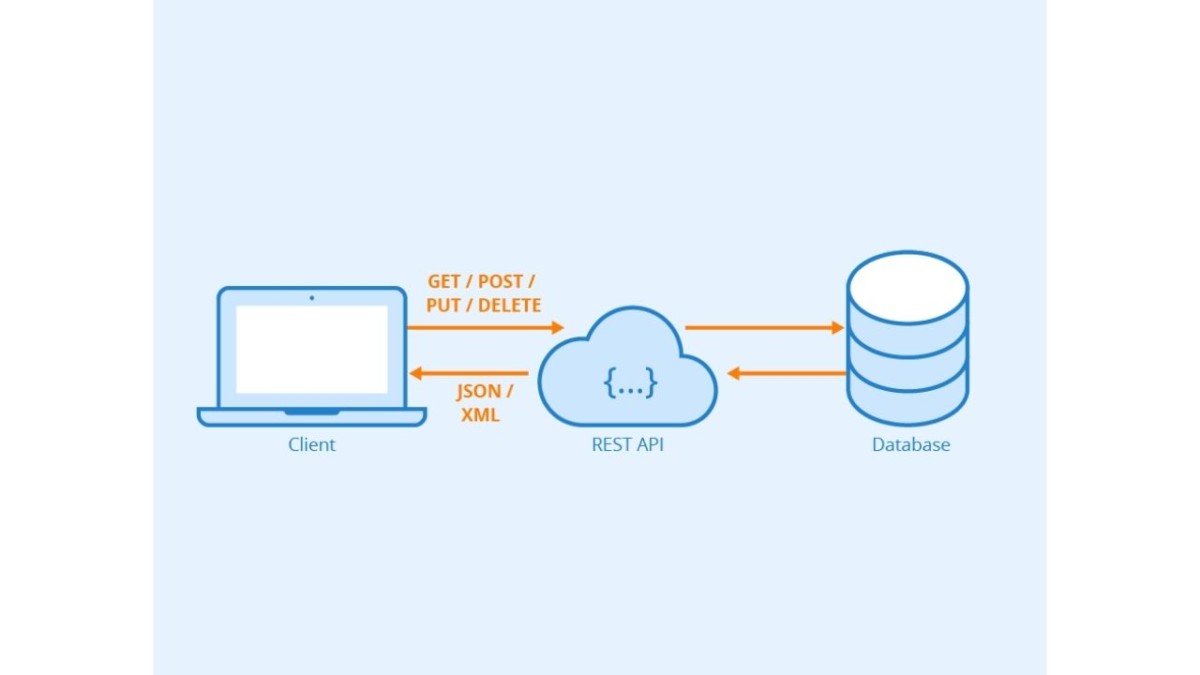What Is REST API?

The term REST refers to a type of software architecture. It is an acronym for REpresentational State Transfer. Within the software development world, when REST architecture is used, it is referred to as RESTful web services. The term REST, first coined by computer scientist Roy Thomas Fielding in 2000 in a doctorate dissertation paper, helps to streamline and simplify what would be otherwise complex data exchange between requesting clients and computer systems on the Internet. Simply put, it allows data to be exchanged and manipulated using a uniform and predefined set of stateless operations.
Table of Contents

What Is an API?
An Application Programming Interface, or API, is a set of standards that defines how data is exchanged between computing interfaces. The types of requests and calls that can be used are defined by the API. In this data exchange architecture, the API governs not only what requests and calls can be made, but also in what format the data should be, and how the conventions are formed to make these calls.
In today's world of web applications and connectivity between software systems, APIs play an important role: they secure and properly format data exchanges between clients and data systems. To the end user, that back-end communication between varying systems by use of APIs something most are not familiar with. However, the usage of APIs has allowed for greater interoperability, so that one system can be completely understood by another system or data application.
For example, the use of an API is involved in a car rental mobile app. APIs are not limited to mobile application usage, but an API is definitely the backbone of many mobile apps that allow access of data within another system. For instance, a car rental website or mobile app would connect to multiple car rental agencies to find the best deal. This is done by developers of the car rental agency, allowing access to certain authorized endpoints. Computer programmers use an API to grant access to specified endpoints, including what data is accessible and what data is allowed to be manipulated.
IronMQ is REST API Friendly
Speak to us to learn how IronMQ is an essential product with a favorable REST API for your application to become cloud elastic.
What is REST API?
A RESTful web services API uses the HTTP protocol to request, access, and manipulate data on a computer system. The standardization between this type of communication and messaging is defined by the API software architecture. When using REST, the requests made can be by both HTTP and HTTPS protocols. HTTPS will, of course, allow for standard security layered messaging.
Within a REST architecture, the client sends message requests using standard HTTP methods. This framework structure allows for greater scalability, standardized data format along with data integrity, all using a secure messaging request protocol. A client could be a web application, a mobile app, or basically any computer system requiring access to data contained in a third party system.
Common data exchange formats used in a REST API include HTTP, HTTPS, JSON, HTML, XML, and more. It is important to note that REST is not a messaging protocol in itself. Instead, it's a set of instructions that define in standard and secure ways how access to data on other systems is available to a client outside of that system. For this reason, RESTful web services can be used to connect one client or application to a software system architecture that the client need not consider when access the data. All of the formatting and standardization is programmed into the REST API architecture.
REST APIs use what is known as CRUD operations. CRUD is an acronym for the four types of functions: Create, Read, Update, and Delete. These four functions are requests made to the server by the client, using standard HTTP methods of GET, POST, PUT, UPDATE, and DELETE. A RESTful web service is created on a computer interface that will allow a client to perform predefined data requests. This is done by an API being set up to expose specific endpoints on a system that these requests are made to. For instance, an API GET request simply would return data arrays or data objects to a requesting client authorized by the API to access endpoints on the computer system. As mentioned above, the format of data can vary, but for the most part APIs return data in a JSON format.

Examples of How REST Works
In order to use a RESTful web service, or REST API, we first must begin with the URL of the endpoint contained on the data system the request from a client it being made to. As an example, let's say a REST API had an endpoint at the following URL:
https://api.someendpoint.com/user/12345?format=json&APIkey=secretclientapikey
A GET request to the above endpoint location of /user/ would return a list of users back to the requesting client. The authorization to use the API is checked by the APIkey parameter being passed to the endpoint. This ensures the client is allowed to make the request or perform the operation on the data at the API interface.
Furthermore, a POST request made to /user/12345/ would create a user with the ID of 12345. A PUT request to same endpoint would update the information for user ID 12345. The REST API takes care of all the hard work, ensuring the data passed into the endpoint is correctly formatted, and the data request returned is in a format usable by the requesting client. Typically, the API's response payload is returned in a JSON data messaging format.
Use a REST API with Iron.io
Find out how IronWorker and IronMQ with a favorable REST API can help your application obtain the cloud with fanatical customer support, reliable performance, and competitive pricing.
1 Comments
Leave a Comment
You must be logged in to post a comment.

Nice and informative content to get more info about rest api to know more visit at- https://apibox.co.in/